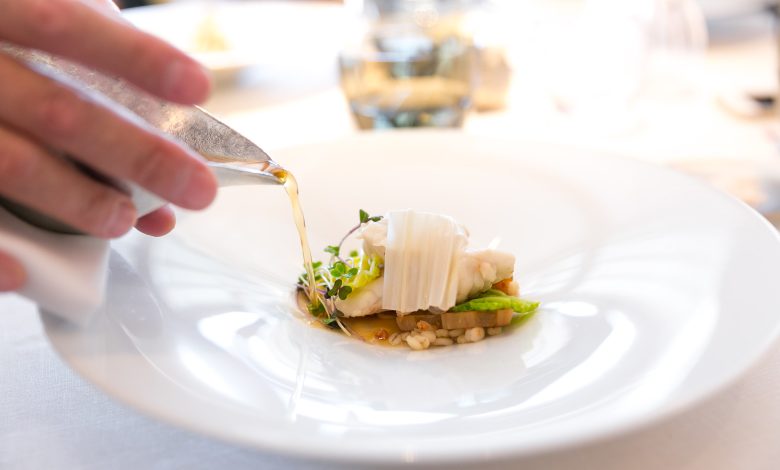The Deadliest Foods Eaten Around The World

Most people are aware of the importance of safe food handling and hygiene, and many foods that we eat on a daily basis have the potential to cause food poisoning if they are not prepared and stored in a hygienic environment. Any kind of contaminated food has the potential to cause sickness.
But some popular foods that are eaten around the world can be highly dangerous if not prepared precisely, resulting in serious illness and even death. And yet, they are often popular delicacies in their home countries, and grace the menus of high-end restaurants worldwide.
Some toxic foods are even eaten as a staple part of the diet, and require specialist cooking methods to make them edible. In Scandinavia, the Amanita Muscaria mushroom, which contains the neurotoxins ibotenic acid and muscimol, is boiled and cooked to neutralise the effect of the toxin, and is presented in a wide range of dishes. While only resulting in inebriation in low doses, in high doses the Muscaria can, in rare cases, cause coma and even death.
Healthy Foods Can Harm Too
And even healthy foods or those that we consider to be ‘normal’ parts of our daily diets can be toxic; alcohol, for example, is a neurotoxin and a hepatotoxin, affecting both the brain and the liver. The stalks of the rhubarb plant are safe to eat, and yet the leaves contain oxalic acid, which can cause renal failure in large doses. Even apple seeds and cherry pits contain trace amounts of cyanide, although it is unlikely that you would eat enough of these to cause any significant damage.
The human body is amazingly resilient, and has adapted to filter out a certain amount of toxins using the kidneys and liver. Which is handy, as toxins make up a surprisingly large amount of our daily diets, and are even found in many common cleaning products used around the home.
Here are a few of the most toxic foods eaten around the world, and how they are prepared to minimise risk to health.
Don’t try these at home!
-
Fugu
Fugu is the Japanese name for the puffer fish, which can be deadly poisonous if prepared incorrectly. The ovaries, intestines, and liver, of fugu are responsible for the deaths, as they contain a neurotoxin called tetrodotoxin.
Tetrodotoxin is up to 1,200 times more deadly than cyanide, and a single puffer fish contains enough poison to kill 30 people. In fact, a deadly dose of tetrodotoxin is smaller than a pinhead, making even the tiniest mistake potentially lethal to any unfortunate customer in the restaurant that day.
Tetrodotoxin works by interfering with the nerve signals to muscles, resulting in motor nerve paralysis and fatal respiratory arrest. Initial symptoms present between 20 minutes to two hours after consumption, with initial symptoms including lip and tongue prickling and burning, which then spreads to the face and extremities.
This is followed by salivation, nausea, vomiting and diarrhoea with abdominal pain, and then motor dysfunction with weakness and hypoventilation or slowed breathing. This culminates in paralysis within 4-24 hours and finally fatal respiratory arrest leading to death. There is no known antidote to tetrodotoxin.
Thankfully, Fugu chefs are highly trained and require a licence, typically undergoing training for 7-10 years before serving fugu to the general public. Despite the precautions taken by chefs, more than 100 people die every year from incorrectly prepared puffer fish.
-
Sannakji
Sannakji is a Korean dish made from live baby octopus tentacles which are cut into small pieces, seasoned, and served while they are still moving on the plate.
While the octopus tentacles are non-toxic in themselves, the suction pads on the tentacles continue to act even after the octopus is dead, and as such, customers have to chew the tentacles thoroughly and quickly, before they have time to stick to the roof of the mouth.
This can result in a serious risk of choking and asphyxiation, particularly if the octopus is not chopped up small enough. Around 6 people a year die from asphyxiation following the ingestion of Sannakji.
-
Ackee Fruit
Ackee is a striking red or yellow fruit which is commonly eaten in the Caribbean, particularly Jamaica. It is suitable for eating after cooking, but the seeds of young ackee are toxic and contain a poison called hypoglycin.
Ackee contains hypoglycins A and B, which have a severe hypoglycaemic effect. This toxin is soluble in water, which then affects the liver, resulting in hypoglycaemia. The victims of ackee poisoning typically present with sudden onset of abdominal pain and extreme vomiting, which progresses to unconsciousness, seizures, coma, and death within 24 hours.
To prevent ackee poisoning, the fruit must be allowed to fully ripen and open on the tree so it is safe to eat. Those who forage ackee fruit must only select fruits which are fully opened and only eat the white pulp surrounding the seeds, leaving the pink flesh and black seeds alone, as these are poisonous.
Caribbean chefs are well-practised in the preparation of ackee fruit, and as a result of their caution and expertise, there is only 1 poisoning per 1,000 people per year. While ackee fruit is sold in the US, it is only legal to sell canned ackee fruit to guarantee customers’ safety.
-
Blood Clams
Blood clams are typically eaten raw, and are collected from low-oxygen water. They are often infected with viruses which can cause numerous health issues, including hepatitis A, typhoid, and dysentery, and contain high levels of heavy metals. It is estimated that the risk of contracting Hepatitis A from blood clams may be as high as 33%.
In one particular case in 1988, 300,000 people were infected and 31 people died from eating blood clams.
The clams themselves are harmless, but their deadliness comes from the environment they are grown in. Blood clams are often harvested in areas which are polluted and unregulated industrial factories release numerous chemicals and toxic substances into the water.
The clams thrive on the low-oxygen water in polluted areas, but the high levels of haemoglobin in the clam increase its vulnerability to diseases, which infect the clam and finally the unfortunate person who eats it.
-
Cassava
Cassava is a root vegetable, which is a staple in African, South American, and Asian cuisine due to its high nutritional value and rich vitamin and mineral concentration. In fact, cassava has even been dubbed a ‘superfood’ due to its high levels of Vitamin K which aids bone growth and development of bone mass and may even help to prevent Alzheimer’s.
However, cassava contains a toxic compound called linamarin, which is converted to hydrogen cyanide in the body, resulting in cyanide poisoning. Sweet cassava is the safer variety, with less than 50 mg per kg, while bitter cyanide contains as much as 400mg, a potentially lethal dose.
Cyanide is one of the most powerful and fast-acting poisons known to man, and can cause death within minutes of exposure. Cyanide is a mitochondrial toxin.
If you’ve studied biology, you will likely remember the phrase ‘The mitochondria is the powerhouse of the cell’. Cyanide, therefore, blocks cellular respiration, which means that cells in the body’s tissues can’t get enough oxygen to work. This produces symptoms including headache, dizziness, fast heart rate, shortness of breath and vomiting, followed by loss of consciousness and cardiac arrest.
To prepare Cassava safely, it must be properly washed, peeled, and cooked thoroughly, typically by boiling. All boiling water must be discarded, as the toxins are removed by the water. Cassava must only be purchased from a reputable supplier.
Despite the risks, cassava remains a popular staple food across the globe, and sustains many lives on its high nutritional value. Cassava is a fascinating insight into how a plant can simultaneously be highly toxic, and yet edible and nutritious.





